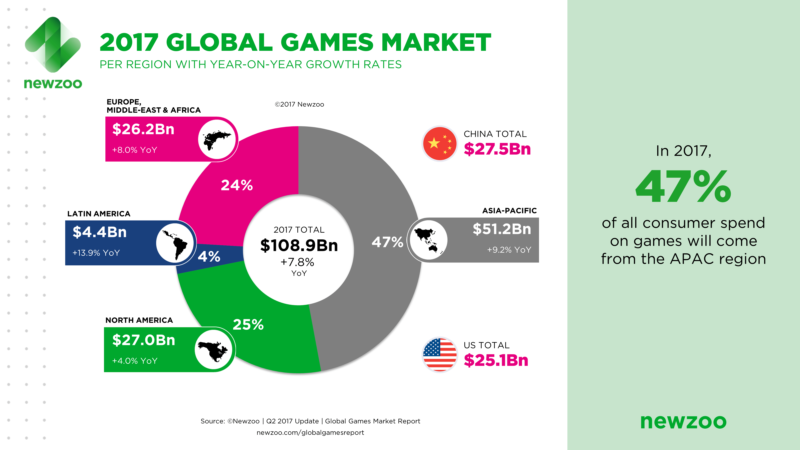
Video game localisation: sometimes targeting fewer markets is the way to go
Video game localisation is all about adapting your games for the widest possible audience. However, we see many developers get a little overambitious with the number of markets they target and make too many compromises with their video game localisation efforts.
You don’t have to conquer the world right away with your upcoming release.
Targeting a long list of countries with your game release is fine, but not if it comes at the expense of quality video game localisation. In fact, sometimes targeting fewer markets is the way to go – especially when you’re moving into new markets for the first time.
Video game localisation quality is more important than quantity
Epic sales figures in three markets is far more impressive than mediocre figures in 20. We’re not saying there’s anything wrong with targeting with targeting 20 different markets, if you can achieve the kind of video game localisation quality they all require. The problems begin when you start to make gaming localisation compromises because you’re targeting more markets than your resources can manage.
If you have to start with a smaller list of target markets in order to make sure you get results you need, then that’s the way to go. Get your video game localisation spot on with the core markets you’re targeting and expand from there. This is particularly important if you’re just starting out and the gaming localisation process is still new to you.
Don’t bite off more than you can chew. There’s nothing worse than getting things wrong in half a dozen markets when you could have focused all of your attention on getting things right in two of them.
Choosing your markets wisely
There are a few things to weigh up when it comes to choosing your initial target markets – particularly if you have to choose a select few and expand from there.

The first thing to consider is the opportunity each market presents. Your first thought will be the potential revenue you can expect to generate from each of them, of course. After this, you’ll want to run through the challenges each specific market comes with and analyse how this might impact your chances.
For example:
- The language makeup of each market: South America is a huge, predominantly Spanish-speaking market while Southeast Asia is a complex mesh of languages.
- The cultural makeup of each market: Likewise, some regions or even countries consists of distinct cultural diversity you might need to consider in your localisation efforts.
- The legal makeup: Media regulations, age restrictions, censorship and a wide range of laws can vary across markets.
- The tech scene: Console gaming is more popular in some markets than others, many are dominated by mobile gaming while others are limited by certain tech criteria like public WiFi access or device penetration.
It’s not a case of avoiding markets that are challenging. It’s about being aware of the challenges and addressing them. This is the whole point of video game localisation: removing these barriers to maximise game sales, downloads, etc.
What you will need to consider when you’re targeting multiple languages is how many of these challenges are realistically manageable in a single video game localisation campaign. You’ll also want to look at how different markets complement each other. For example, localising for South America, Spain and Portugal could be a lot more manageable than China, Russia and French-speaking markets.
That’s not to say you should avoid targeting China, Russia and French-speaking markets in the same campaign. Those are great markets if you can achieve the right kind of gaming localisation quality for all of them at once. If you can’t, then you might have to refine your list of target markets. It’s better to get video game localisation right in a smaller selection of markets that take on too many and fall short in all of them.
The key takeaway from this today is to make sure you get video game localisation right in every market you target, from day one. If you can handle targeting every major gaming market in the world and hit targets in each of them, then you’ve got nothing to worry about.
On the other hand, if you’re short on the time, budget and resources it takes to make the most of each market on your list of target audiences, it sometimes pays to focus on a smaller number and make sure the quality is there to begin with. You can always scale and add new markets to your video game localisation campaign as time goes by.
- Posted by Alexandra Kravariti
- On 30th November 2017
- 0 Comments



0 Comments